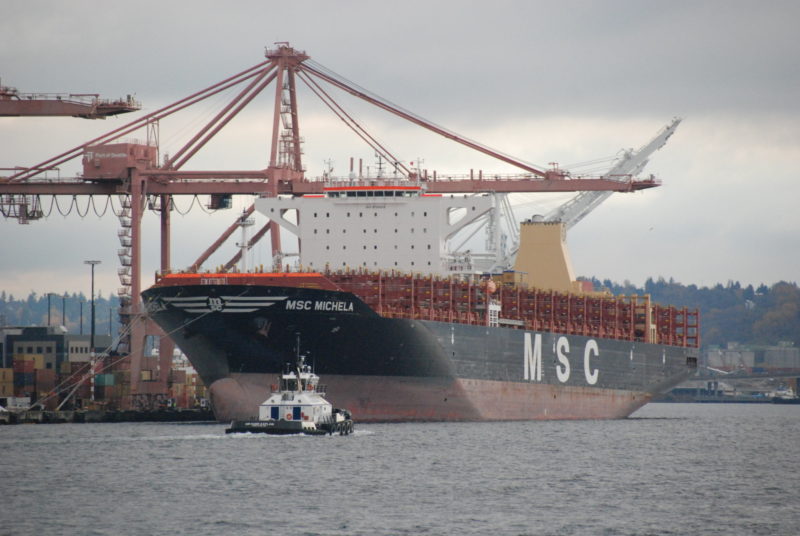Four years after the Maritime Administration had promised to develop a national strategy to pump up the maritime industry, the proposal remains stuck in the Washington, D.C., bureaucracy, with no rescue in sight.
The initiative began with much anticipation in 2014 with a series of “listening sessions” in Washington and elsewhere that gathered a variety of views from different maritime sectors. Topics included mariner shortages, lagging port and intermodal freight infrastructure and the decline of the U.S. merchant fleet.
Marad was tasked with drafting a strategy to address these and other challenges facing the merchant marine, and Congress required that it be completed by 2015. That deadline was missed, Donald Trump was elected president in 2016, and the new administration wanted to do its own review of the strategy. Congress extended the deadline to submit the document to Congress to February 2020.
In the meantime, no timeline has been released for the strategy’s completion, and Marad has not made any recommendations to increase U.S.-flag vessels’ competitiveness or to ensure the long-term viability of the U.S.-flag fleet and U.S. citizen mariners, according to a study released in August by the General Accountability Office (GAO).
GAO said that without the strategy, decision-makers lack crucial information needed to make policies to address the industry’s complex problems. GAO also recommended that a timeline be submitted to Congress.
“Marad is conscious of the time it has taken to develop the strategy since Congress directed that it be done in 2014,” Mark H. Buzby, Marad administrator, told a hearing last week before the House Subcommittee on Coast Guard and Maritime Transportation.
He explained that it was put together under the Obama administration but was “withdrawn by the current administration so they could have an opportunity to review, revise and align the strategy” with the administration’s National Security Strategy and National Defense Strategy.
“Marad has not stood idle during this interim period,” Buzby assured lawmakers. “We are using the extension as an opportunity to further collaborate with stakeholders to refine goals and produce an effective National Maritime Strategy.”
Lawmakers were not happy with the delays, and put the blame squarely on the Office of Management and the Budget, which prepares the president’s budget and reviews effectiveness of federal policies and programs.
“This report is hung up at OMB with (OMB director) Mike Mulvaney. We won’t get it out until we put heavy pressure on them,” said John Garamendi, D-Calif., the ranking Democrat on the subcommittee.
The GAO report said that although federal support for commercial sealift helps meet national defense requirements, rising operating costs and declining volumes of government cargo volumes have made it hard for U.S.-flag commercial ships to compete internationally. As a result, the number of ships and associated jobs available to U.S. mariners continues to drop. The study also noted a shortage of qualified volunteer mariners to crew government-owned reserve ships in the event of a national emergency or war.
Buzby said a key issue for Marad is “simultaneously coordinating access to shipping services to meet commercial demands, with potentially overlapping DOD sealift requirements and other national emergency needs that involve this limited fleet of U.S.-flag vessels.”
A key to improving the fleet is to get more cargo on ships. “It comes down to cargo,” said Buzby, a retired Navy rear admiral and graduate of the U.S. Merchant Marine Academy. “We are looking at things we can do to get new government and commercial cargo.”
But policy solutions will be hard to develop without the input of a national maritime strategy, the GAO said.




